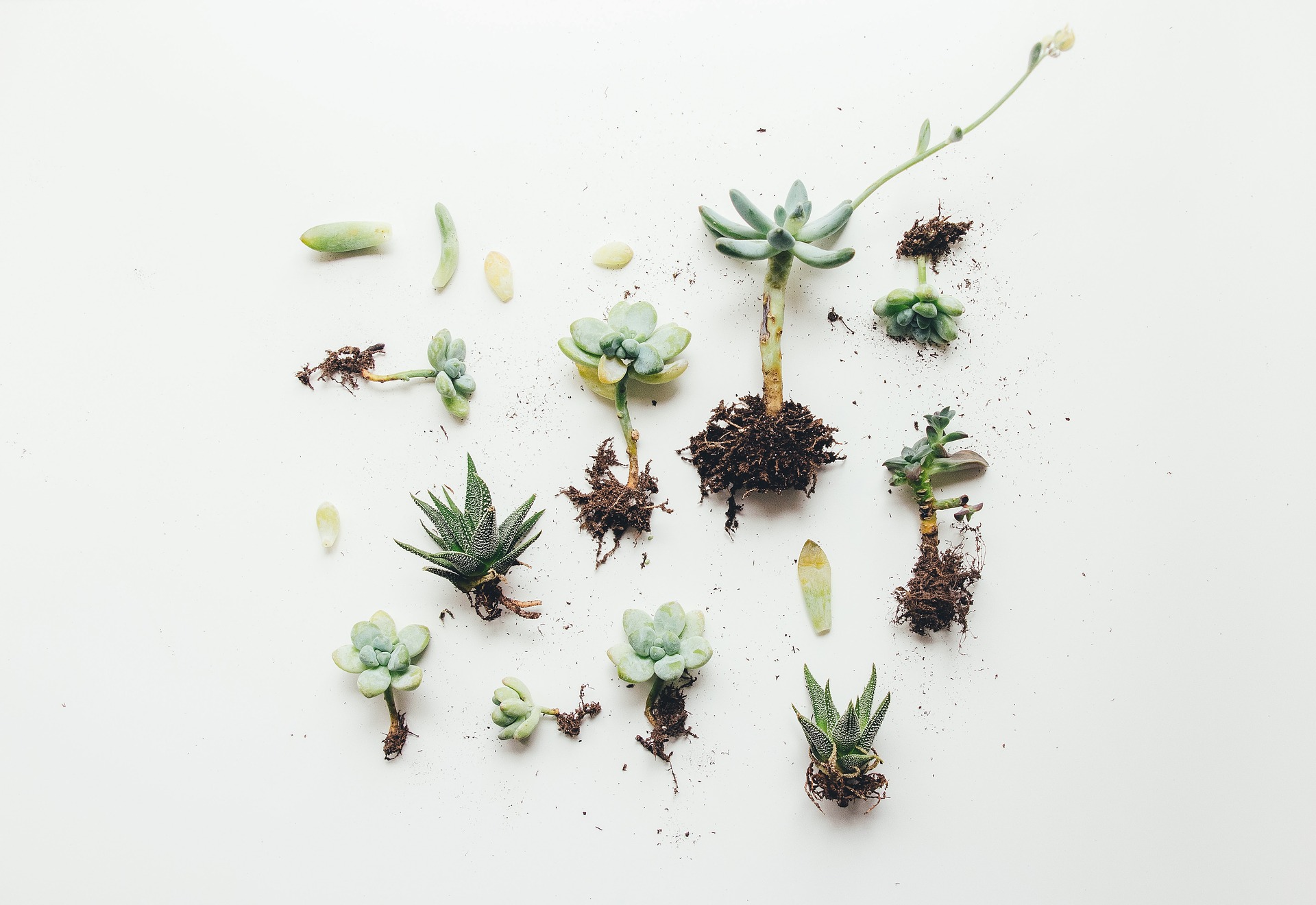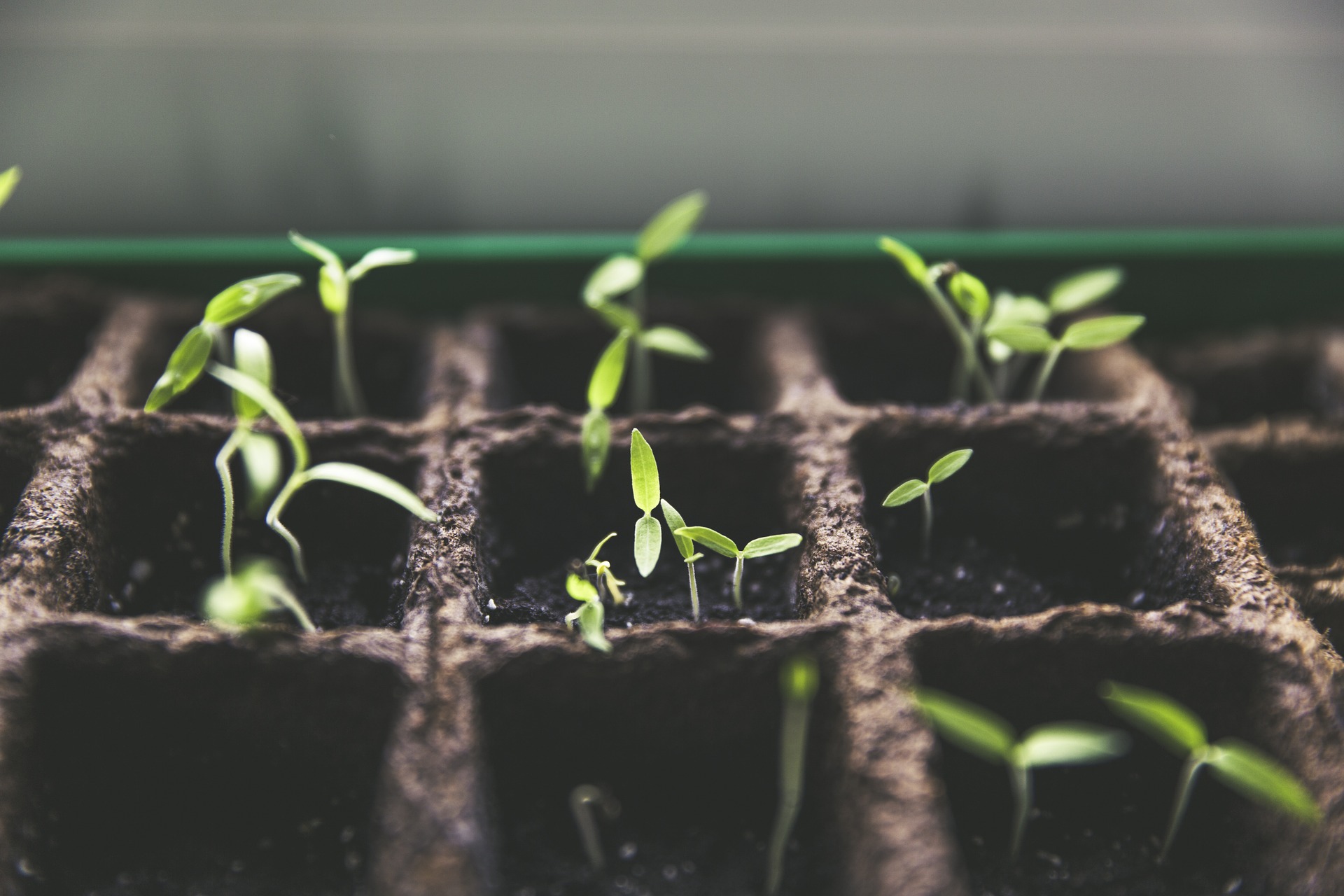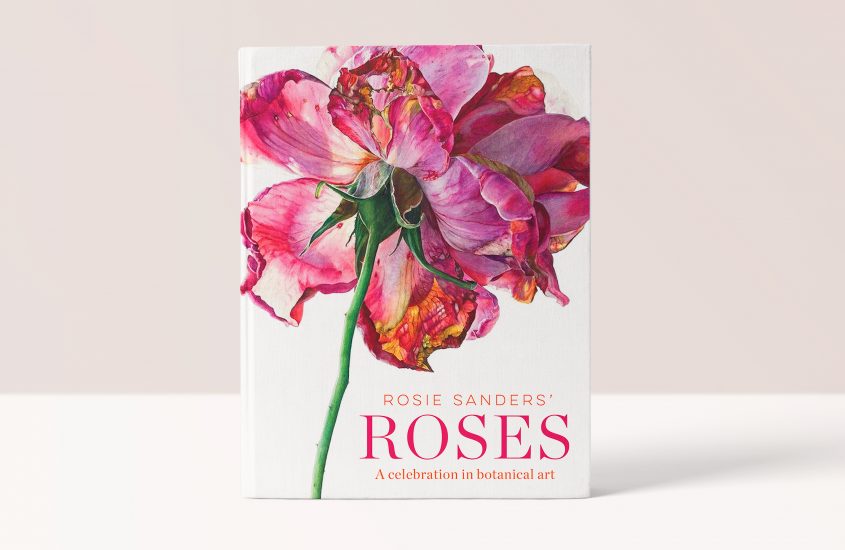Which Soil is Best for Indoor Plants?

Confused by which soil to choose for your lovely house plants? Follow my handy guide and perfect mixtures to keep your indoor plant thriving. I’ve even included a DIY recipe if you want to create your own for the ultimate happy house plant soil mix.
When I first started on my gardening journey I must admit I just bought the standard compost from the local garden centre and didn’t really look at all the other bags but I came to realise pretty quickly that the type of soil and what I add to it can make all the difference to your plants. It’s like when we feed ourselves – if we just ate bread everyday and nothing else we would survive but we wouldn’t thrive and function properly.
If you think of soil as the gateway to plant health then you are on the right track, think about the size of the roots are they thin and spindly, or big strong chunky roots that need to lots of space to grow. If you compare an orchid to a succulent or a fern to a large monstera deliciosia you can easily see that the roots will be completely different. I encourage you to look at the roots of your plant before even thinking about repotting them. Actually when you take a plant home from the nursery it is a good idea to just let the plant settle for a couple of weeks before repotting – this will give you time to check for any potential pests or problems before putting it with your collection. It’s very easy to miss things like spider mites or fungus when plants are all together so make sure you take the time to give your plant a good health check before repotting.
Ready to Get Started?
Below I have listed all the potential amendments you can add to your soil and in what environment and plant they would be best suited for. I will also give you various recipes based on the types of plants you might be planting for optimum growth and health so that you can look at your plant and get the soil mix suited just for you. You can also buy pre-mixed bags for different plant types if you wish and I will list these below as well.
INDOOR COMPOST OPTIONS
HOUSE PLANT COMPOST
A simple pre mixed bag of compost formulated for house plants, a quick and easy solution, if you are new to house plants, and want to get started or if you aren’t sure of the type of plant you have and / or root structure. Normally contains peat and a variety of plant nutrients. Be aware the drainage won’t be a good as soil that has more added to it so be careful when watering.
GOOD FOR: Most house plants without distinctive root structure or special requirements, for example Peace Lily, African Violet etc.
NOT RECOMMENDED FOR: Any specialist plant such as orchid, succulents and cactus plants.
SEED AND POTTING MIX COMPOST
If you are growing from seed either in a greenhouse or on the windowsill / inside, it’s a good idea to invest in a specialist seed and potting mix, this is finer and less dense that the standard compost and will allow small seedlings to develop a healthy root structure. It is free draining so will help against root rot. If the compost is too think or lumpy the roots cannot spread and your seedling will struggle to grow. You may wish to mix a small amount of perlite with this mixture to help retain moisture.
GOOD FOR: Planting from seed, especially small seeds, potting on from small plants, propagation from cuttings.
NOT RECOMMENDED FOR: Larger plants that have strong roots and require more stability and drainage.
ORCHID AND SPECIALIST COMPOST
You may have seen the orchids in the shops or have purchased one for your home only to find that once it has bloomed you are left with leaves and a stick that once had flowers, if you nurture your orchid, it can bloom again, and if you need to repot it then you would need to use orchid bark that helps the roots to grow freely and produce flowers.
GOOD FOR: All orchid plants, and useful as part of a bespoke soil mixture for aroid plants / plants with larger root structures, especially to assist with drainage.
NOT RECOMMENDED FOR: Any seedlings or plants that have smaller / hairline roots.
ERICACEOUS COMPOST
This is a specialist compost that is formulated for plants that benefit from acid soils, you may have heard of the way a hydrangea can change colour from blue to pink or vice versa based on the PH of the soil.
Be aware that you will need to top this up with a specialised fertiliser.
GOOD FOR: Plants that require highly acidic soil such as blue hydrangeas and azaleas.
NOT RECOMMENDED FOR: Any plants that do not respond well to acidic soil and require a more neutral / alkaline PH.
PERLITE AND VERMICULITE
These are minerals created from puffed volcanic rock that have been created to provide not only free draining conditions it also aerates the soil. Given that these minerals can retain water they are a perfect way to keep your soil moist without becoming wet and boggy. This is very useful with plants that are susceptible to root rot and also allows the roots space to grow whilst providing nutrients from the minerals.
GOOD FOR: Most house plants and seedlings, you can even add a layer of either perlite or vermiculite to your seeds to provide moisture and a light surface for the seedling to breakthrough rather than soil which is heavier.
NOT RECOMMENDED FOR: Adding too much into cacti and succulent mixes, while it can be used you may prefer to use a lighter mix so that there isn’t an excess of moisture retention in the soil.
GRAVEL AND GRIT
Very useful when mixed with compost to provide free draining soil, sometimes it’s useful to add a small layer to the base of a pot to allow free draining when watering particularly for larger plants and can also be used as a mulch layer to keep moisture away from the stem of the plant but still provide extra humidity after watering. It can also be used to top dress around plants for design aesthetic.
GOOD FOR: Succulents and large drought loving plants such as cactus.
NOT RECOMMENDED FOR: Plants with tiny root structures
HORTICULTURAL SAND
This is a perfect addition when mixed with compost to enhance free draining conditions if you have smaller plants especially succulents and any plants that may have originated from a drought loving environment. Be aware not to use general sand but purchase specialist horticultural sand to make sure that it is fully sterilised for plant use.
GOOD FOR: Succulents and drought loving plants – it can be used with most plants for extra drainage if you wish.
COIR
You may have heard of coir for your doormat or seen the thick coir padding on hanging baskets. Did you know you can also purchase coir in a compressed block which when soaked in water will expand and creates a perfect compost for your aroid plants when mixed with other elements? I like using the Coco Coir but you can choose whichever you wish. Make sure you leave the compressed block for at least twenty minutes for the block to expand and make sure you follow the instructions on the back of the packet for the amount of water to add for optimum moisture. I normally place mine in a bucket and then pour the water over the top. Once fully expanded break into smaller pieces with your hands.
GOOD FOR: All aroid plants and most house plants with larger root structures
NOT RECOMMENDED FOR: Seedlings and cuttings with smaller roots.
SPHAGNUM MOSS
We can all imagine moss growing alongside plants in the wild, by a waterfall and along the rocks so why not use it with your house plants. Sphagnum moss provides the perfect moisture blanket for your plants, whether wrapped around a moss pole to support your larger house plants or as a layer over the compost to enhance the humidity. It can also be added in smaller quantities to the soil mix but make sure to break it up in to much smaller pieces. It’s a perfect way to keep a cutting moist if you are planning on gifting or sending to a friend or family member. It’s also known to be used in propagation to help roots to develop.
GOOD FOR: Adding to a moss pole, part of a air plant display, extra humidity for plants
NOT RECOMMENDED FOR: Any plants that produce pups (offshoots) through the soil as it might hinder their growth, plants that like to be very dry such as cacti.
ACTIVATED CHARCOAL / CARBON
Although I’m finding it very hard to source locally, activated charcoal also called carbon is believed to rid the soil of impurities, prevents mould and odours and help to repel any bugs or pets. You may have seen and heard of it when used as a powder in beauty products but if you buy it thicker pieces this can be added to your soil in small amounts to benefit your compost mix. It’s often used in filters in aquariums to help remove impurities. It’s also perfect for a terrarium setup where you can place it before the soil and plants i.e. layer of gravel, layer of activated charcoal and then a layer of soil.
GOOD FOR: All plants
WORM CASTINGS
A natural fertiliser and when I’m out digging in my garden I am very careful not to hurt the worms who are doing so much good in my soil outside Worm castings are essentially earthworm poop, the worm eats the soil and and enriches the soil as it passes through them. It’s an organic natural fertiliser and the perfect addition to your soil, this can be sprinkled onto the soil throughout the growing season or in your mix when repotting.
GOOD FOR: Any house plants.
FERTILISER
Many people believe that you need to feed your house plant with fertiliser all the time, and if you have a plant that’s producing new leaves you may wish to add a weak mixture of fertiliser out of the growing season. Each plant often likes a particular mix and while there are many commercial ones available you may wish to either create your own or purchase an organic fertiliser that is suited to the majority of your plants. Feed during the growing season (Spring – Summer) and normally once a month. Be aware of fertiliser burn if you use too much. GOOD FOR: All plants.
MY POTTING MIX RECIPES TO MAKE YOUR OWN HOUSE PLANT COMPOST
FOR CACTUS AND SUCCULENTS
50% POTTING COMPOST
20% SAND
20% PERLITE OR VERMICULITE
10% ACTIVATED CHARCOAL
You can also use a base layer of grit or fine gravel at the bottom of the pot to enhance drainage.
FOR FERNS AND SMALLER PLANTS WITH THINNER ROOTS
50% POTTING COMPOST
20% COIR (BROKEN UP INTO SMALLER PIECES)
10% PERLITE OR VERMICULITE
10% ACTIVATED CHARCOAL
10% WORM CASINGS Make sure to pot into a free-draining pot that has holes in them (even if you put this inside a pretty pot without holes).
FOR AROID PLANTS AND PLANTS WITH LARGER ROOTS
40% COIR (BROKEN UP INTO SMALLER PIECES)
20% ORCHID BARK
10% PERLITE OR VERMICULITE
10% ACTIVATED CHARCOAL
10% WORM CASINGS
You can also add some grit to the base of the plant or a small mesh to aid with drainage.
FOR CARNIVOROUS PLANTS
40% ORCHID BARK
20% GRIT
10% PERLITE OR VERMICULITE
10% ACTIVATED CHARCOAL
10% WORM CASINGS
FOR ORCHIDS
60% ORCHID BARK / SPECIALIST MIX
20% PERLITE OR VERMICULITE
20% ACTIVATED CHARCOAL
Please note that this mixture may differ depending on the type of orchid you have – you can also supplement with specialist orchid feed. Please research on your particular type of orchid you have to make sure the mix is right for your plant.



